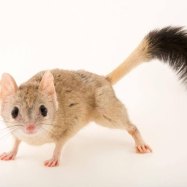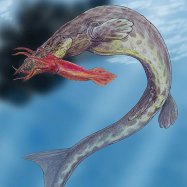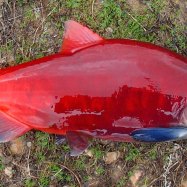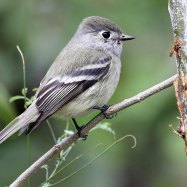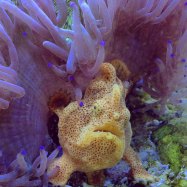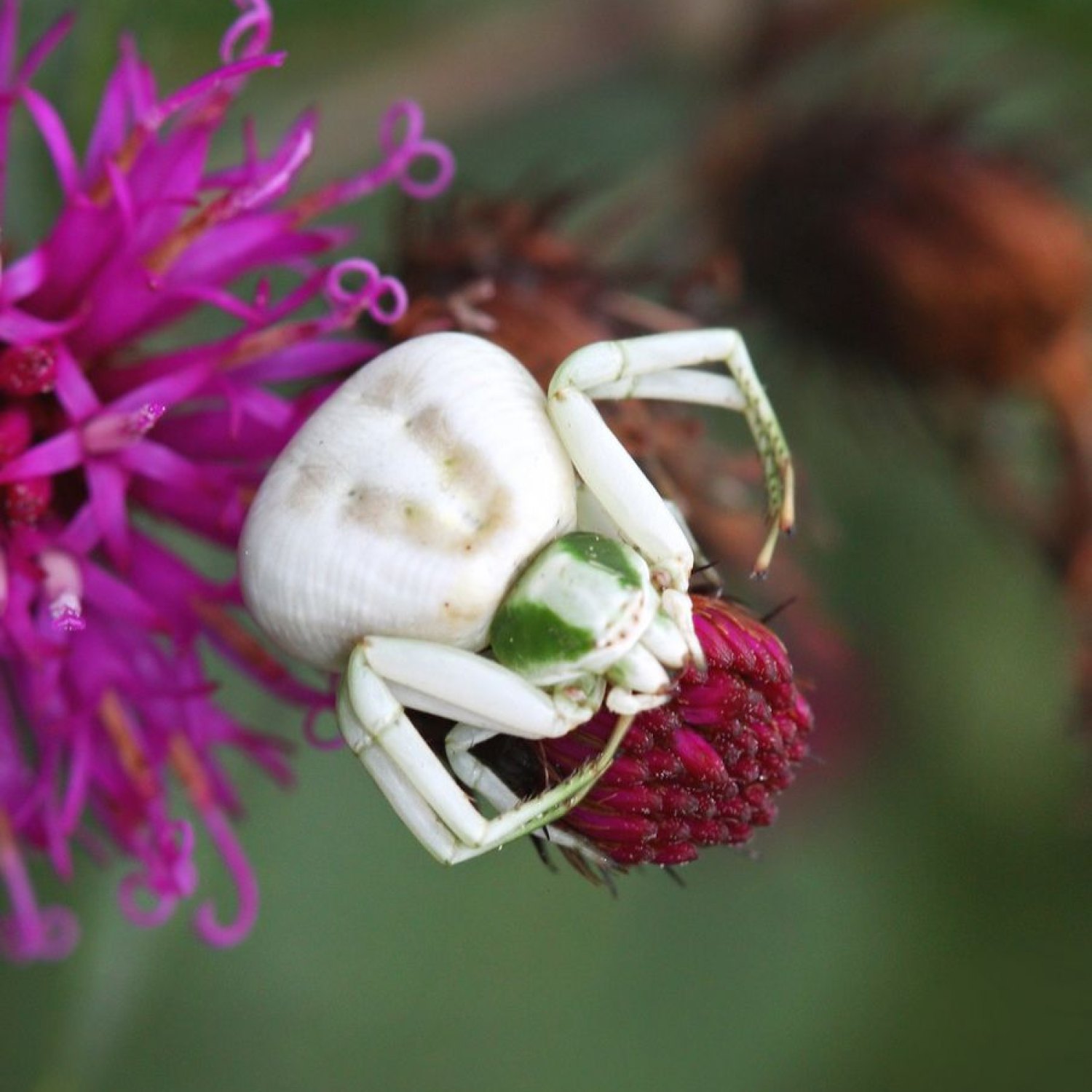
Crab Spider
Varies depending on the species, typically between 5 to 15 mm
The Crab Spider, part of the Thomisidae family, is an elusive and fascinating creature. Ranging between 5 to 15 mm in length, its compact body and long front legs make it a skilled hunter. Found in various locations, this clever spider uses camouflage to catch its prey. Keep an eye out for this small yet mighty animal on your next outdoor adventure! #CrabSpider #AnimalFacts
Animal Details Summary:
Common Name: Crab Spider
Kingdom: Animalia
Habitat: Various habitats including gardens, forests, grasslands, and deserts
The Fascinating World of the Crab Spider
Hidden among the flowers and leaves of gardens and forests, the tiny and elusive crab spider is a master of disguise and ambush. With their unique body shape and impressive hunting abilities, these spiders have captured the fascination of scientists and nature enthusiasts around the world.Scientifically known as Thomisidae, crab spiders belong to the vast class of arthropods, which includes insects, crustaceans, and other arachnids. They are also commonly referred to as crab spiders due to their compact body shape and long front pairs of legs, which resembles the body and claws of a crab Crab Spider. This distinctive appearance has earned them a special place in the family of spiders.
Despite their small size, crab spiders have a widespread geographical distribution and can be found in a variety of habitats, including gardens, forests, grasslands, and even deserts. They are found all around the world, making them a truly global species. Interestingly, their country of origin is still unknown, as they have been able to adapt and thrive in different parts of the world.
These spiders have a unique feeding method, which has earned them the title of "ambush predators". Unlike other spiders that spin webs to catch their prey, crab spiders are more active hunters. They use their cryptic coloration to blend into their surroundings and wait patiently for unsuspecting insects to come near. As soon as the prey is in range, the crab spider attacks with lightning-quick reflexes, using their sharp fangs to inject a lethal venom that paralyzes their potential meal.
One of the most intriguing aspects of crab spiders is their ability to camouflage themselves to match their environment Ceratopsian. Their coloration varies depending on the species and their habitat. Some crab spiders have orange or yellow bodies, while others can be white, green, or even bright pink. This unique survival strategy allows them to blend in with flowers, leaves, or bark, making them almost invisible to their prey and predators. This remarkable adaptation has made them incredibly successful hunters.
The compact body shape of crab spiders is another noteworthy characteristic. Unlike the long and sleek appearance of other spiders, crab spiders have a squat and flattened body. This allows them to easily hide and grasp onto narrow surfaces, such as flower petals or tree branches. Their front pair of legs is also much longer than the others, giving them a crab-like appearance that adds to their elusive nature and hunting abilities. These legs are often used to capture and hold onto their prey, making them an essential tool for their survival.
In terms of size, crab spiders can vary greatly depending on the species. On average, they measure between 5 to 15 mm in length, but some can grow as large as 25 mm. Despite their small size, these spiders are fierce predators and can take down insects much larger than themselves.
One of the most intriguing aspects of crab spiders is their family structure. Unlike other spiders that have complex social structures, crab spiders are solitary creatures and prefer to live alone. However, they do not shy away from mating when the time comes. Courtship and mating rituals vary between species. In some, the male crab spider will approach a female cautiously before attempting to mate, while in others, the male may offer the female a gift of food to entice her. Once the mating process is complete, the male usually goes on its way, leaving the female to take care of the offspring.
Another interesting fact about crab spiders is their method of reproduction. Instead of laying eggs and waiting for them to hatch, female crab spiders carry their eggs with them wherever they go. This allows them to protect and nourish their offspring until they are ready to hatch. Once they hatch, the young spiders will disperse and start their independent lives.
Despite their somewhat intimidating appearance, crab spiders do not pose a threat to humans. They are not aggressive and will usually only bite if they feel threatened. Their venom is not harmful to humans and is only used to subdue their prey. In fact, these spiders can be beneficial to have in your garden, as they help control insect populations.
Crab spiders are a crucial part of our ecosystem, and scientists continue to study these fascinating creatures to gain a better understanding of their behavior and role in nature. Their unique adaptations and extraordinary hunting abilities make them a true marvel of the animal kingdom. So, next time you're wandering through a garden or forest, keep an eye out for these clever and cunning creatures, and you just might spot one hiding in plain sight.

Crab Spider
Animal Details Crab Spider - Scientific Name: Thomisidae
- Category: Animals C
- Scientific Name: Thomisidae
- Common Name: Crab Spider
- Kingdom: Animalia
- Phylum: Arthropoda
- Class: Arachnida
- Order: Araneae
- Family: Thomisidae
- Habitat: Various habitats including gardens, forests, grasslands, and deserts
- Feeding Method: Ambush predators
- Geographical Distribution: Found worldwide
- Country of Origin: N/A
- Location: N/A
- Animal Coloration: Varies depending on the species, often camouflaged to match their surroundings
- Body Shape: Compact body with long front pairs of legs
- Length: Varies depending on the species, typically between 5 to 15 mm
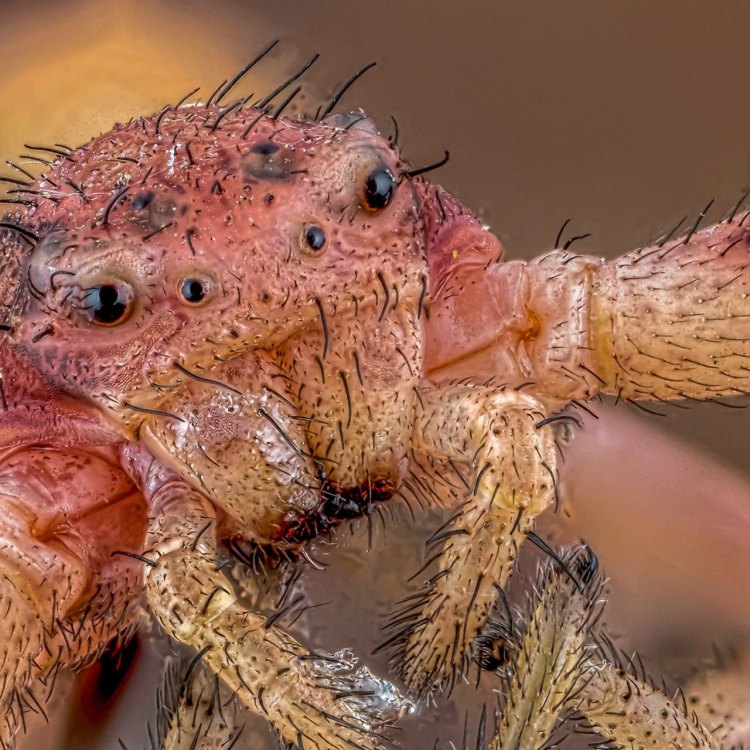
Crab Spider
- Adult Size: Varies depending on the species, typically between 5 to 15 mm
- Average Lifespan: Varies depending on the species, typically several months
- Reproduction: Sexual
- Reproductive Behavior: Female spiders lay eggs that hatch into spiderlings
- Sound or Call: Does not produce sounds
- Migration Pattern: Do not migrate
- Social Groups: Solitary
- Behavior: Crab spiders are known for their ability to change color to match their surroundings. They wait patiently on flowers, plants, or other surfaces for their prey to come close, and then quickly ambush and capture them. They have excellent vision and use it to accurately strike and immobilize their prey.
- Threats: Crab spiders face the same threats as other spiders, including habitat loss, pollution, and predation. They are sometimes preyed upon by birds, lizards, and other spiders.
- Conservation Status: Not evaluated
- Impact on Ecosystem: Crab spiders play a role in controlling insect populations by preying on them
- Human Use: Some species of crab spiders are used in research and are also popular in the pet trade
- Distinctive Features: Compact body, long front pairs of legs, ability to change color
- Interesting Facts: 1. Crab spiders can change color to match the color of the flower or surface they are on. 2. Some species of crab spiders mimic ants to avoid detection by predators. 3. They have excellent eyesight and can accurately strike and immobilize their prey. 4. Male crab spiders are often much smaller than females. 5. Crab spiders can walk sideways, similar to crabs.
- Predator: Birds, lizards, and other spiders
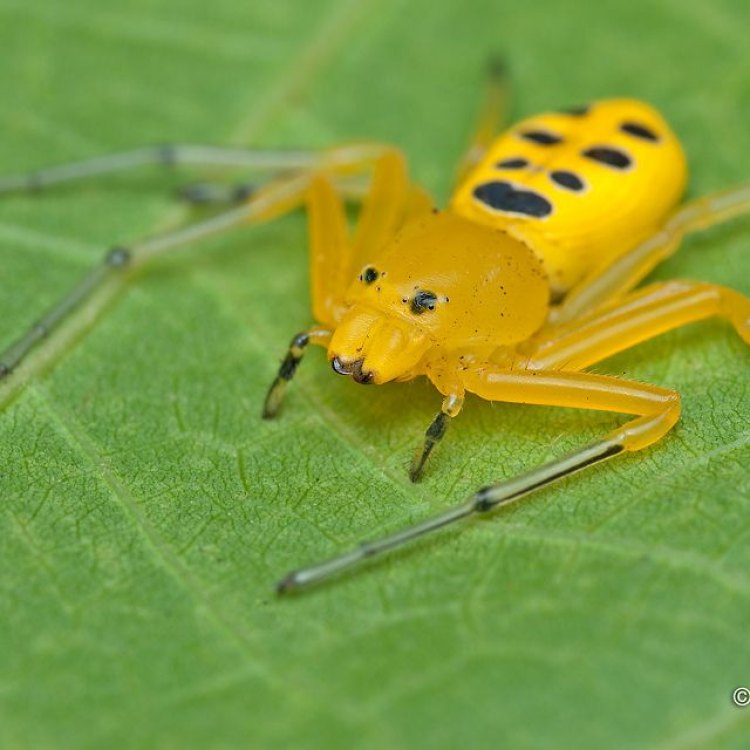
Thomisidae
The Fascinating World of the Color-Changing Crab Spider
Spiders are one of the most feared and misunderstood creatures on the planet. They have long been depicted as creepy and dangerous, and their eight-legged appearance can send shivers down the spine of even the bravest souls. But not all spiders are the same. Meet the crab spider, a unique and fascinating species that has captured the interest of scientists and nature enthusiasts alike PeaceOfAnimals.Com.The crab spider, also known as the flower spider or goldenrod spider, belongs to the family Thomisidae. They are found in various habitats all over the world, from tropical rainforests to temperate regions. There are over 2,000 species of crab spiders, each with its distinct characteristics. However, they all share some common traits, such as their preference for ambushing their prey and their ability to change color.
Let's take a closer look at these amazing creatures and discover what makes them so unique and worthy of our attention.
A Tiny Predator
Crab spiders come in a variety of sizes, with the smallest species measuring only 5 mm and the largest reaching up to 15 mm. Their size may be small, but don't underestimate their hunting skills. These spiders are one of the top predators in their habitats, and their small size actually works to their advantage. Their small bodies allow them to hide easily and stay camouflaged, making them skilled ambush predators Centipede.A Short Life Span
The lifespan of a crab spider varies depending on the species. Some live for only a few months, while others may live for up to a year. They typically reach adulthood in the summer and lay their eggs in the fall, with the young spiderlings hatching in the spring. Their short lifespan may be due to the harsh conditions they face in the wild, such as predation and lack of resources. However, they are still able to fulfill their important role in the ecosystem during their short time on this planet.A Sexual Species
Like most spiders, crab spiders reproduce sexually. The males court the females by performing a series of courtship rituals, such as vibrating their webs or producing pheromones. Once the male has successfully mated with the female, he often becomes a victim of cannibalism, becoming the female's post-mating meal. However, in some species, male crab spiders have adapted to this behavior and have developed ways to escape being eaten.A Fascinating Reproductive Behavior
Female crab spiders lay their eggs in spherical, silk egg sacs, which they guard diligently until the spiderlings hatch. These spiderlings are miniature versions of their parents, and they are well-equipped to survive on their own. Once they hatch, they disperse and start their own lives, continuing the cycle of reproduction.Color-Changing Masters
One of the most remarkable characteristics of crab spiders is their ability to change color to match their surroundings. This ability, known as "chromatophores," allows them to camouflage themselves and avoid detection by predators and prey. This is especially useful when they are waiting on plants or flowers, as it helps them blend in and wait for unsuspecting insects to come close. They can change their color in just a matter of days, making them one of the fastest color-changing animals in the world.Master Ambush Predators
Crab spiders are not just experts at changing their color, but also at hunting. They are ambush predators, meaning they wait patiently for their prey to come close before pouncing. They have excellent vision, and their eight eyes allow them to accurately detect movement and strike their prey with precision. They use their long front legs to trap their prey and inject them with venom, immobilizing them. This hunting strategy has proven to be successful, with some species being able to capture prey much larger than themselves.Solitary Creatures
Unlike other spiders that may live in colonies, crab spiders are solitary creatures. They prefer to live and hunt alone, avoiding competition for resources and potential conflicts with other spiders. However, in some species, the female crab spiders may coexist with their offspring in a sort of temporary social grouping, until the spiderlings mature and go their separate ways.Facing Threats
Crab spiders, like any other spider, face various threats in the wild. Habitat loss, pollution, and predation are some of the main challenges they face. They are often preyed upon by birds, lizards, and other spiders, leading to a decline in their population. As humans continue to encroach on their habitats and pollute their surroundings, these threats only become more significant.The Impact on Ecosystems
Crab spiders play an essential role in controlling insect populations. By preying on insects, they help maintain a balance in their ecosystems and prevent overpopulation of certain species. These tiny predators may seem insignificant, but their presence has a significant impact on the overall health and balance of their habitats.Crab Spiders and Humans
Some species of crab spiders have caught the eye of humans. They are often used in research due to their unique color-changing abilities and their interesting reproductive behavior. In addition, they are also popular in the pet trade, with some spider enthusiasts keeping them as pets. However, it is essential to remember that they are wild animals and should not be kept as pets unless you have the proper knowledge and resources to care for them.Distinctive Features
The crab spider's name comes from its distinctive crab-like appearance, with a compact body and long front pairs of legs. They also have an additional set of much shorter legs, giving them a characteristic "crab-like" posture. Besides their unique appearance, their color-changing abilities and hunting strategies make them stand out from other spiders.Interesting Facts
1. Crab spiders can change color to match the color of the flower or surface they are on, making them one of the most remarkable color-changing animals in the world.2. Some species of crab spiders mimic ants to avoid detection by predators. This behavior is known as Batesian mimicry, where a harmless species imitates the appearance of a dangerous one to deter predators.
3. They have excellent eyesight and can accurately strike and immobilize their prey, making them successful ambush predators.
4. Male crab spiders are often much smaller than females, and their distinctive size difference can be seen in some species.
5. Crab spiders can walk sideways, similar to crabs, giving them another characteristic that sets them apart from other spiders.
Potential Predators
Despite the defense mechanisms of crab spiders, they are still preyed upon by various animals in their habitats. Birds, lizards, and other spiders are known to hunt and eat crab spiders, making it essential for them to stay hidden and use their color-changing abilities to their advantage.The Crab Spider's Conservation Status
Due to the large number of species and the lack of research on them, the conservation status of crab spiders has not been evaluated. However, as their habitats continue to decline and their populations suffer, it is crucial to take steps to protect them and their ecosystems.In conclusion, the crab spider may seem like just another tiny spider, but its unique characteristics and abilities make it anything but ordinary. From their color-changing abilities to their impressive hunting skills, they are a fascinating species that deserves more attention and appreciation. As we work towards preserving the delicate balance of nature, let's not forget to appreciate and protect these amazing creatures that play an essential role in maintaining our ecosystems.
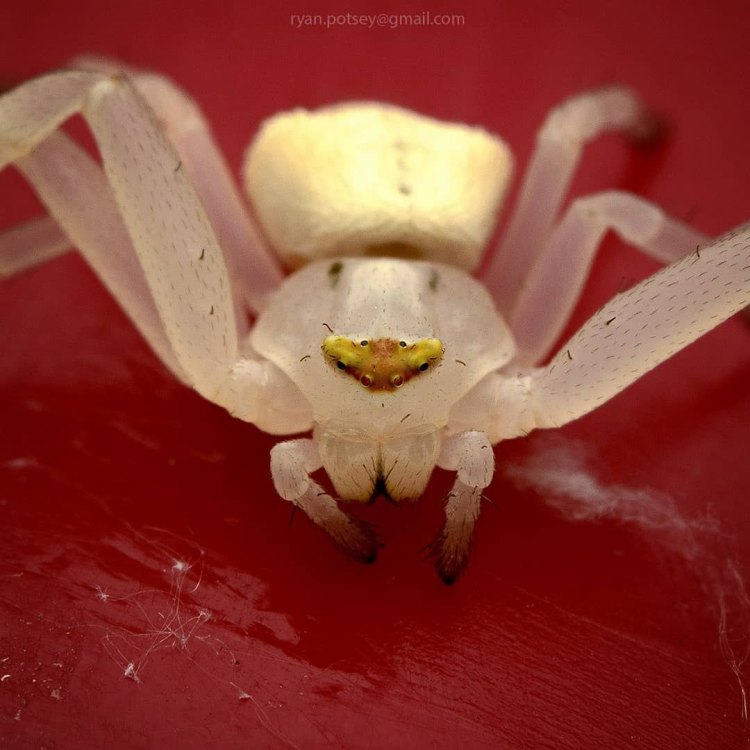
The Fascinating World of the Crab Spider
Disclaimer: The content provided is for informational purposes only. We cannot guarantee the accuracy of the information on this page 100%. All information provided here may change without prior notice.

